Affiliate links on Android Authority may earn us a commission. Learn more.
LG QNED vs Samsung Neo QLED explained: Which TV display tech should you buy?
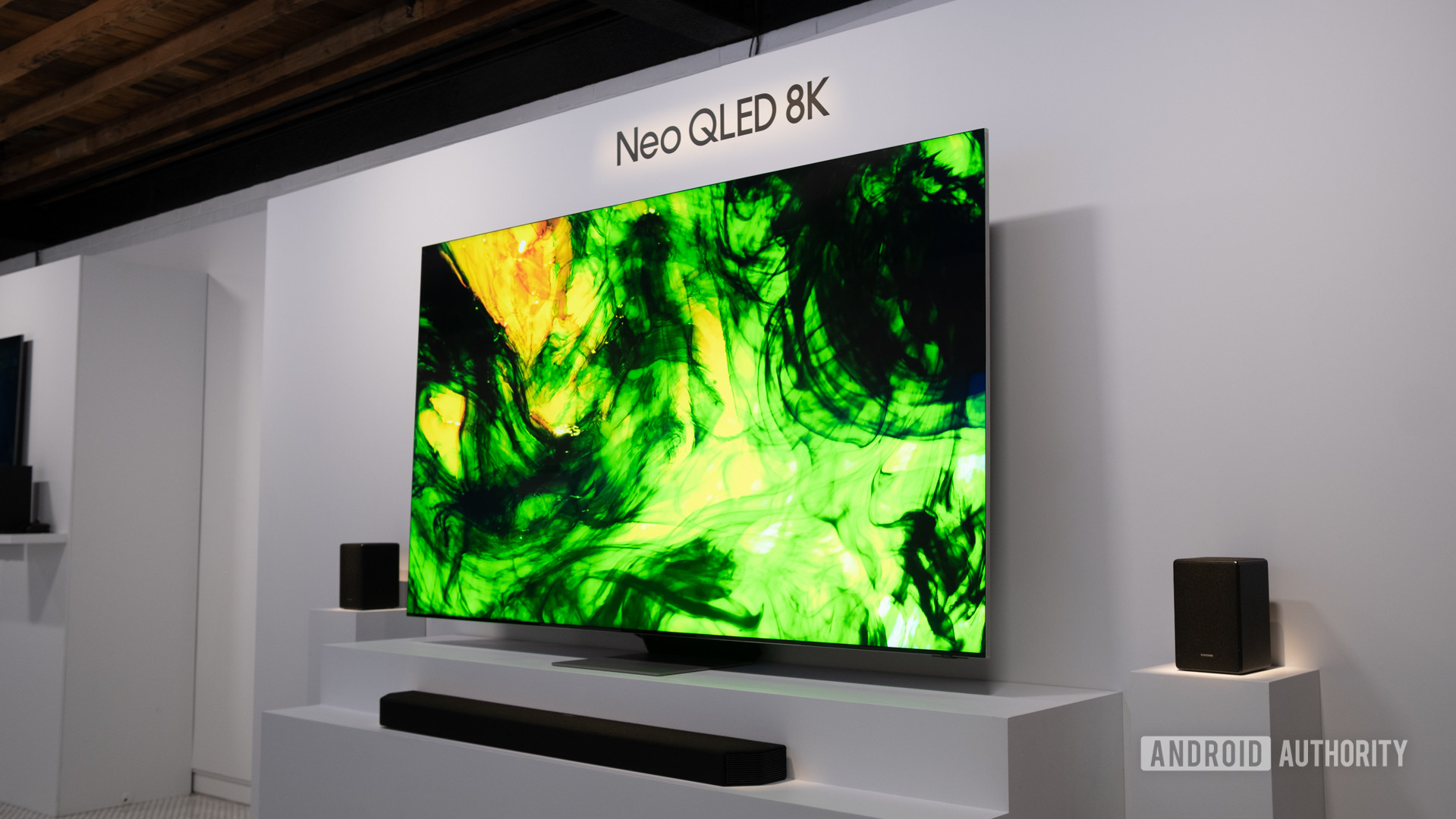
LG and Samsung are often at the forefront of TV display technologies. When it comes to the higher-end market, LG is backing its QNED format, while Samsung is peddling Neo QLED. Both boast improved colors, contrast ratios, and peak brightness levels for HDR content, as well as 4K and 8K resolutions. They can look amazing compared to cheaper sets.
But what differences are there between these two standards and which one should you have your eye on for your next TV?
A quick recap on TV display improvements
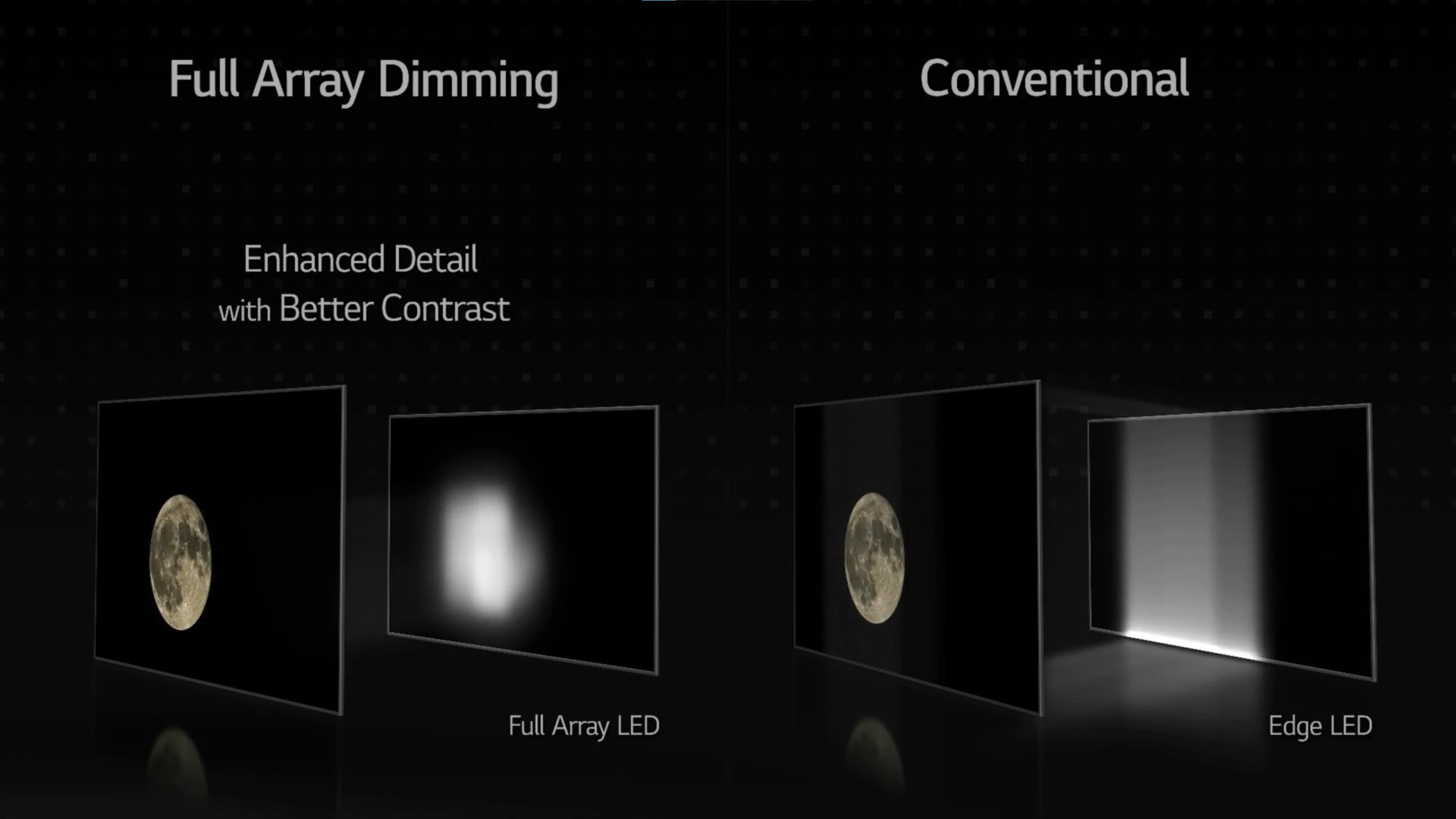
QNED is simply another name for Mini-LED technology, which is best described as an enhancement of traditional LCD TVs. To understand it, let’s quickly go back to the LCD/LED TVs that have become de facto in the past decade.
An LCD produces colors by filtering a common backlight. In the technology’s original incarnation, the drawback was that backlighting would often bleed into dark pixels, hurting contrast ratios. Black portions of an image were never truly black. That made LCD panels markedly inferior next to OLED, which could make blacks appear truly black. This is especially important when displaying HDR (high dynamic range) content, which looks true to life.
QNED helps improve contrast for a more realistic visual experience vs traditional LCD sets.
To narrow the gap, LED TVs introduced multiple backlights with “local dimming.” This allows the certain portions of the display to be dimmed or turned off entriely, while colors and whites elsewhere remain in their full glory. There are different ways to arrange backlights for local dimming, each with its own pros and cons. Full-array local dimming — using a grid — is the best, but also expensive. Edge-based dimming is cheaper, but decidedly inferior. You can see examples of both techniques above — full array dimming will always deliver better contrast and black levels, particularly in darker scenes.
Even with full-array local dimming, however, the number of dimming zones remains a limiting factor. LED TVs sometimes exhibit “halo” or “blooming” artifacts between lit and unlit zones. Details smaller than the backlight size, such as bright stars in a dark sky, don’t really benefit from the enhanced contrast ratios of these local dimming techniques. They can appear washed out compared to the broader image. Increasing the number of dimming zones helps smooth out these errors and improve performance, but makes panels much more expensive. The average display with full-array local dimming will only have a few hundred zones.
In the past, we had to turn to OLED for per-pixel dimming capabilities. Luckily, LCD-LED is closing the contrast gap once again with the help of mini-LED tech. Or as LG and Samsung call it, QNED and Neo QLED respectively.
LG QNED explained
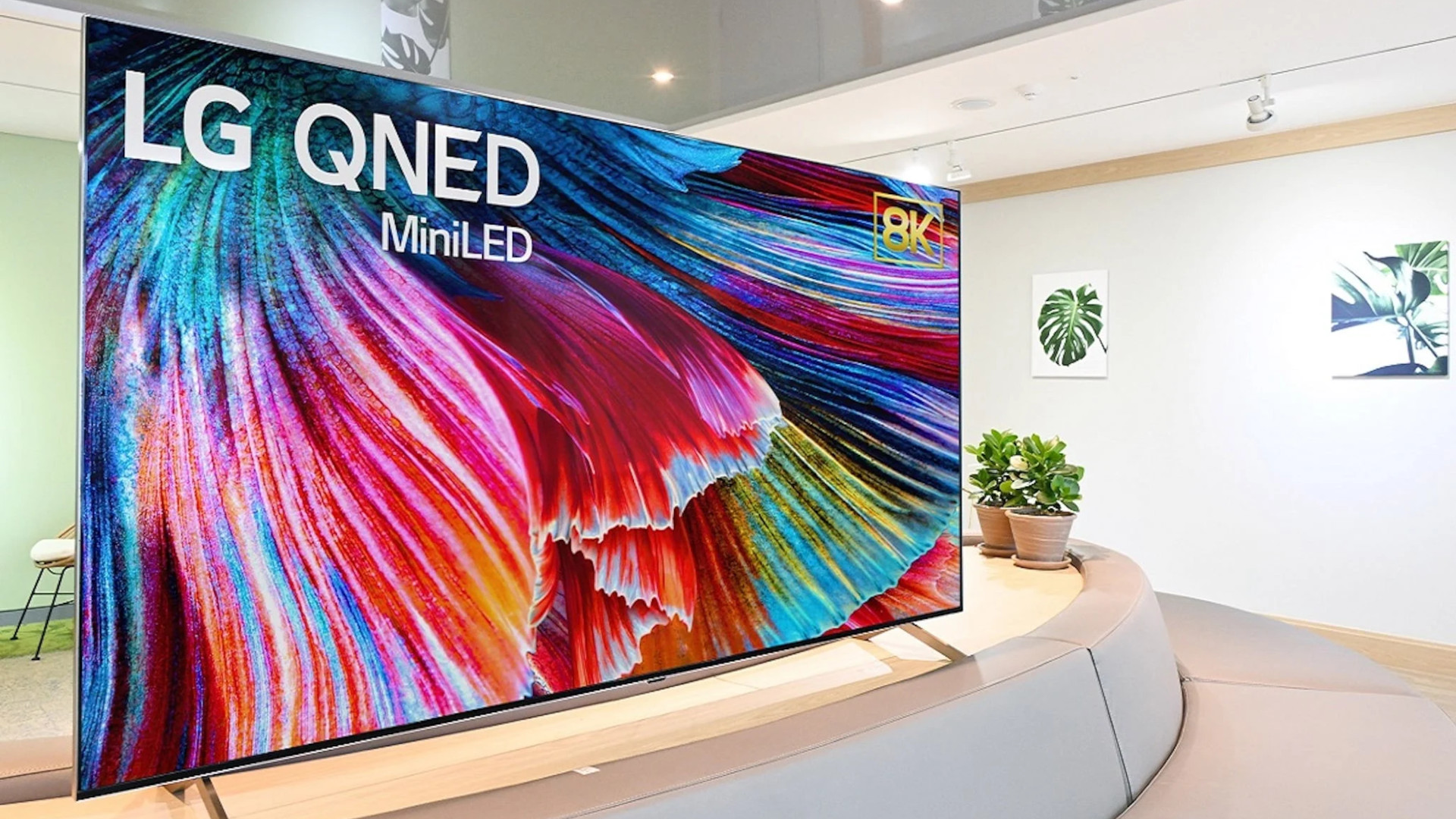
LG QNED is the company’s first-ever Mini-LED TV technology. This extends the LCD/LED formula we’ve discussed, with 2,500 local dimming zones and almost 30,000 Mini-LEDs per panel on an 8K model. The crux of the breakthrough is the small size and density of the Mini-LED backlights. This greatly increases the number of local dimming zones, delivering an improved contrast ratio and a reduction in blooming artifacts. LG promises a ratio of 1,000,000:1, paired with a smooth 120Hz refresh rate.
The crux of the breakthrough is the small size and density of the Mini-LED backlights.
The Q part of the QNED moniker stands for quantum dot, which deals with the color filtering parts of the display. The full title is Quantum NanoCell Emitting Diode. Remember, QNED is still a filter-based LCD technology at heart, and filters block light, resulting in less saturated colors. Quantum dot technology enhances/replaces the traditional colored photoresists in an LCD color filter with sub-microscopic conducting nanocrystals. In LG’s case, QNED uses first-party NanoCell material to shape the spectral power of the backlight, which is then filtered through a quantum-dot enhancement film.
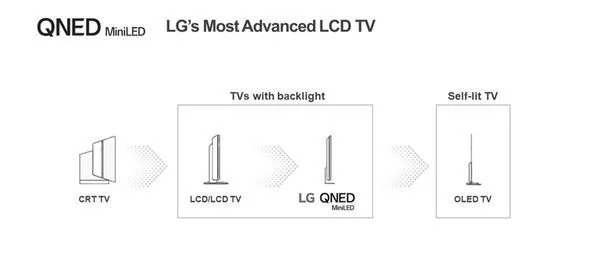
In a nutshell, quantum dot reduces the light loss and crosstalk from traditional LCD color filters. This results in more vivid colors and a wider gamut. Combined with a large number of small locally-dimmed backlights, LG QNED does a decent job at taking on expensive OLED displays. Note that OLED remains LG’s premium TV technology even with the advent of QNED, which now sits between LG’s NanoCell and OLED ranges.
Samsung Neo QLED explained
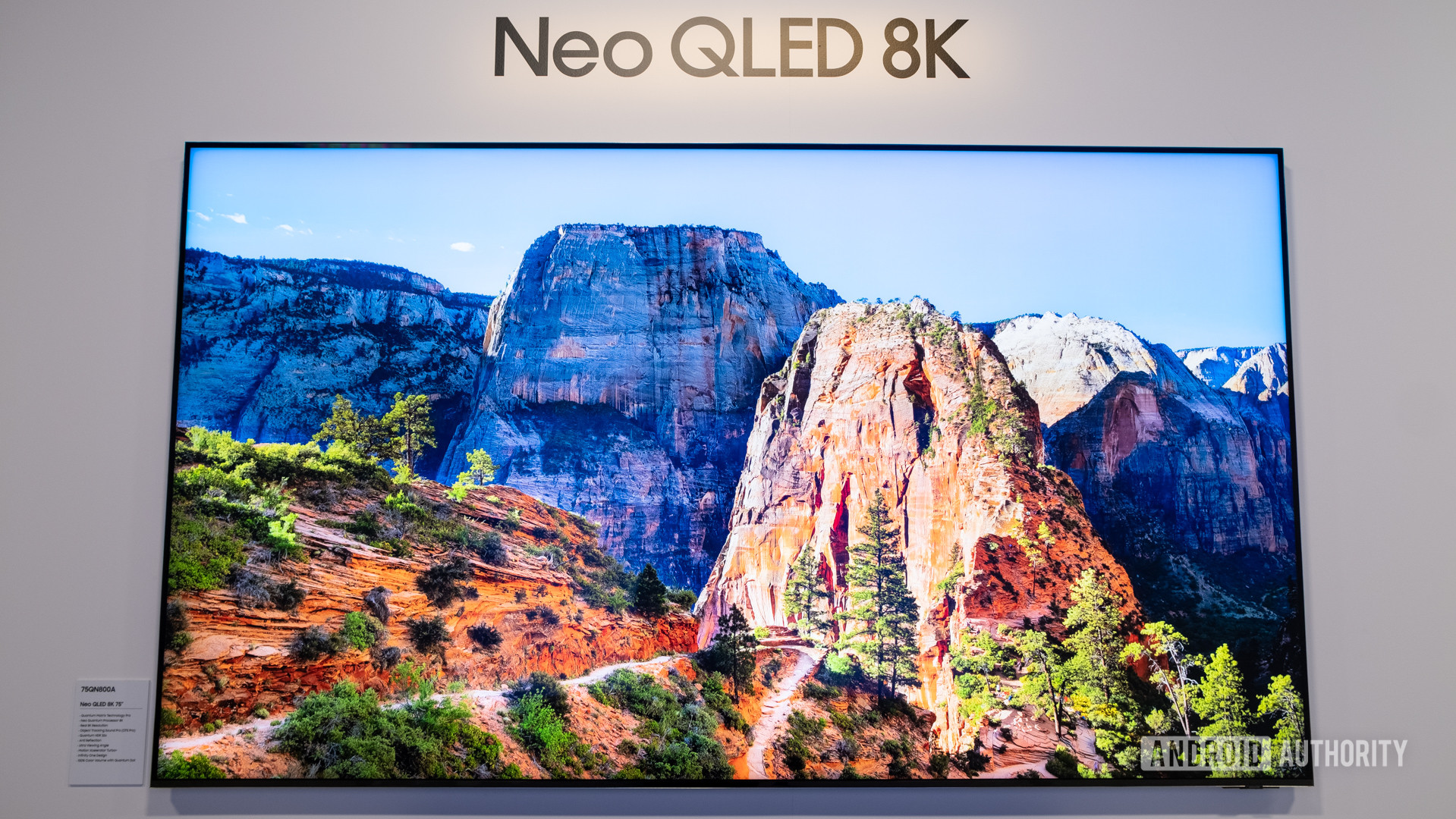
Just like LG’s QNED, Samsung’s Neo QLED is a transmissive Mini-LED backlighting technology, and the ‘Q’ in QLED stands for quantum. Neo QLED is related to Samsung’s Quantum Matrix Technology and its picture-optimizing Neural Quantum Processor. Samsung is using a quantum dot layer for enhanced colors, promising 100% reproduction of the DCI-P3 color gamut.
As a side note, don’t confuse Samsung’s regular QLED sets with the flagship Neo QLED series. The latter includes a mini LED array with all of its benefits like local dimming, while regular QLED TVs still rely on traditional backlighting tech.
Nevertheless, the standout feature of Samsung’s Neo QLED technology is smaller backlight LEDs. And in this respect, it’s similar to LG. To achieve its results, the company removes the packaging and lens from the LED chip, replacing it with a new ultra-thin microlayer to guide the LED light.
The Neo in Samsung's Neo QLED refers to the presence of a mini LED backlight
Samsung’s Quantum Matrix technology boasts precise dimming, enhanced local power distribution, and a Black Detail Boost option to extract more detail from dark areas. Meanwhile, the Neural Quantum Processor offers multiple neural network models trained for content upscaling. This should help make the most of a TV’s 4K or 8K resolution, even with older content. All of these aspects aren’t unique to Samsung’s but it’s worth knowing as you’ll see it on a product label.
Other Neo QLED features include 12-bit steps of LED brightness control for local dimming, although this doesn’t necessarily mean a panel supports 12-bit HDR content. Like LG, Samsung’s Neo QLED TVs also sport 120Hz refresh rates, and NVIDIA G-Sync support, the latter eliminating “tearing” artifacts when gaming.
While NEO QLED was once Samsung’s flagship display technology, it now shares that spot with QD-OLED or quantum dot OLED. The latter offers better colors than a standard OLED display but early units still suffered from screen burn-in.
Adding complexity to the situation, Samsung is using emissive Micro-LED technology in other TVs, not to be confused with transmissive Mini-LED. The current Micro-LED flagship measures nearly 100 inches and costs $100,000, so as you might gather, it won’t be a mainstream affordable product any time soon.
LG QNED vs Samsung Neo QLED:

Both LG and Samsung are banking on smaller, denser Mini-LED backlight technologies to close the quality gap between more affordable LCD TVs and premium OLED ranges. While there are bound to be differences in image quality, you have to look at models side-by-side to draw any definitive comparisons.
An interesting point of comparison between LG and Samsung’s technologies is the LCD color filter layer used. While we don’t know what panel layer LG Display is using, it’s likely sticking with In-Plane Switching (IPS) based on previous releases. Samsung has already transitioned to Vertically Aligned (VA) LCD, which delivers better contrast than traditional IPS at the expense of narrower viewing angles. This HDR contrast versus viewing angle compromise could be the biggest discernible difference between the two. IPS also boasts faster response times than VA, but this is only an important factor if you plan to pair the TV with a gaming PC or console.
While there are important hardware and software differences between LG’s QNED and Samsung’s Neo QLED, the two share a fundamentally similar approach to solving LCD’s contrast and color deficit with OLED TVs. If you’ve been looking for a near-OLED quality TV without the eye-watering price tag, keep an eye out for TVs powered by Mini-LED.